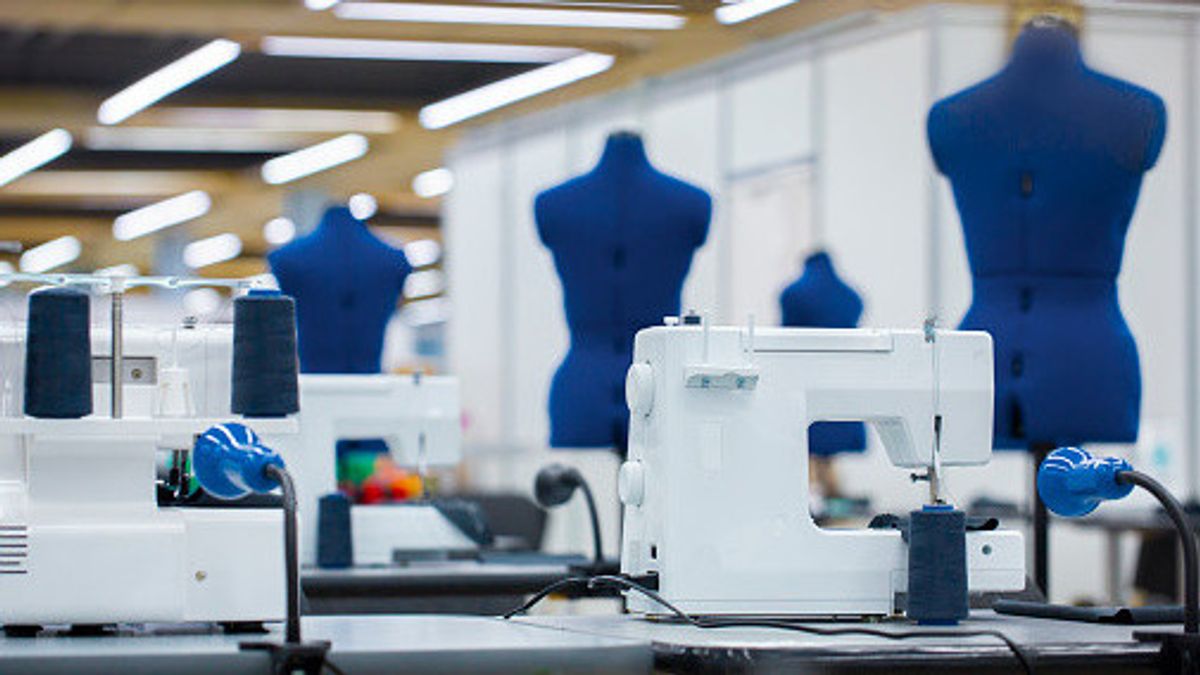JAKARTA – In many ways, robots have replaced human tasks. Robotic clothing making, however, is perhaps something relatively new. This can be seen from the efforts that involve clothing and technology companies, such as Germany's Siemens AG and Levi Strauss & Co.
“Apparel is the last multi-trillion-dollar industry that hasn't automated,” said Eugen Solowjow, who heads the project at the Siemens lab in San Francisco that has been working on the automation of apparel manufacturing since 2018.
The idea of using robots to bring back more manufacturing from outside the US gained momentum during the pandemic as chaotic supply chains highlighted the risks of relying on distant factories.
Finding ways to stop manual labor in China and Bangladesh will allow more clothing manufacturers to return to Western consumer markets, including the United States. But it's a sensitive topic.
Many apparel makers are hesitant to talk about the demand for automation — as it fuels fears that workers in developing countries will suffer. Jonathan Zornow, who has developed techniques to automate parts of a jeans factory, says he has received criticism online and even one death threat.
A spokesperson for Levi's said he could confirm the company was participating in the early phases of the project but declined to comment further.
Tailoring does pose a particular challenge to automation. Unlike making car bumpers or plastic bottles, which can be handled well by robots who handle them, the fabric is limp and has endless thickness and texture.
Robots don't have the deft touch that a human hand might. To be sure, the capabilities of robots are constantly improving, but it will take years for them to fully develop their ability to handle fabrics.
However, if research continues to develop and robots can become more sophisticated in handling every job, then robots that make clothes and clothes will soon be created. Currently, robots can handle thin wire cables.
"The work at Siemens grew out of trying to build software to guide robots that can handle all kinds of flexible materials, such as thin wire cables," said Solowjow, quoted by Reuters. He added that they quickly realized that one of the most ripe targets was clothing. According to Statista, the global clothing market is estimated to be worth 1.52 trillion US dollars (IDR 23.729).
Siemens is working closely with the Advanced Robotics for Manufacturing Institute in Pittsburgh, which was founded in 2017 and funded by the US Department of Defense to help legacy manufacturers find ways to use new technology.
They identified a San Francisco startup with a promising approach to the floppy fabric problem. Instead of teaching a robot how to handle cloth, startup Sewbo Inc. hardened the cloth with chemicals so it handles better like a car bumper during production. Once finished, the garment is washed to remove the substance that makes it stiff.
"Nearly every piece of denim is washed after it's made, so it fits right in with existing production systems," says Zornow, founder of Sewbo.
This research effort eventually grew to include several apparel companies, including Levi's and Bluewater Defense LLC, a small US-based maker of military uniforms. They received a $1.5 million grant from the Robotics Institute of Pittsburgh to experiment with the technique.
VOIR éGALEMENT:
There have been other attempts to automate sewing factories. Software Automation Inc, a startup in Georgia, has developed a machine that can sew T-shirts by pulling the material onto a specially equipped table.
Eric Spakey, CEO of Bluewater Defense, a maker of military uniforms, was part of the research effort with Siemens but was skeptical of Sewbo's approach.
"Putting the material (hardener) into the garment—it just adds another process, which increases the cost," said Spackey, though he added that this makes sense for manufacturers who already wash clothes as part of their normal operations, such as a jeans manufacturer.
However, the first step to enter the robot into the clothing factory has been done.
Sanjeev Bahl, who opened a small jeans factory in downtown Los Angeles two years ago called Saitex, has been studying Sewbo engines and is preparing to install his first trial machine.
Leading through his factory in September, he pointed to workers hunched over old-style machines and said many of these tasks were ripe for the new process.
"If it works," he said, "I don't think there's any reason not to have a large-scale (jeans) factory in the US again."
The English, Chinese, Japanese, Arabic, and French versions are automatically generated by the AI. So there may still be inaccuracies in translating, please always see Indonesian as our main language. (system supported by DigitalSiber.id)













